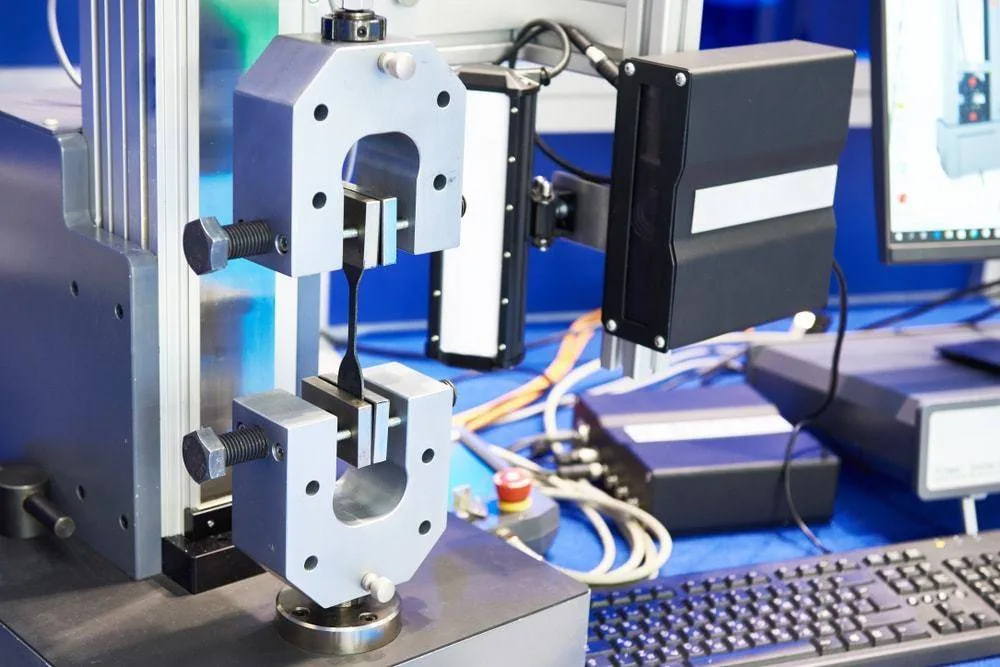Sensors are used in the construction industry in many different capacities. For example, they can detect the presence of water and moisture on the foundation of a building or on any other surface of a structure.
The sensors are installed in strategic locations around a construction site to allow for easy communication between personnel and management. They can also provide alarms when something breaks or leaks, or to summon emergency assistance when needed.
There are many kinds of sensors that construction professionals have at their disposal. This wide variety allows these workers to perform the proper materials testing according to the regulations and specifications of each site.
There are sensors used to determine the stability of pre-cast concrete structures. There are also sensors that can detect the condition of steel beams and columns.
There are even special sensors that can detect the vibration of materials being used in the construction process, which is essential to prevent the possibility of catastrophic cracks.
Sensors used in the construction field include tilt sensors, magnetic sensors, passive magnetic sensors and ultrasonic sensors. These are all sensors that have been designed specifically to be used in the construction field.
The materials that make up a building can undergo extreme conditions. For instance, weather extremes, such as hurricanes, tornadoes and earthquakes, can cause massive damage to buildings and cause leaks to occur. Water sensors can detect leaks and cracks in the foundation and in the walls of a building.
Tilt Sensors
Tilt sensors are widely used in mining and construction instruments for the purpose of tilt positioning of fixed and moving machinery. It is sometimes also used to detect tilt and angle within a small to very large range of movement. These sensors have made this industrial instrument a vital part of any construction site.
These sensors are primarily used in aerospace to detect aircraft attitude, engine conditions, pressure and temperature, along with other parameters that are important in controlling the operation of airplanes. This is a great help for the aerospace engineers while they are designing, testing, and working on the airplanes.
It can also save time and money on many occasions as it can provide real time data about the attitude of an airplane, which would normally be difficult and expensive to obtain.
In addition tilt sensors are often used by the pilots to keep an eye on the performance of the plane. The tilt sensors is capable to distinguish any changes in the altitude and position of the airplane to detect any problems and potential threats that the pilot might encounter.
In the construction industry, tilt sensors are also widely used. They can detect any change in slope and inclination of the ground or even any dynamic changes in the soil that can affect the performance of the construction site.
In mining applications these instruments can detect the tilt angles of the underground veins and can be used for several different applications. In automotive applications, these can detect the slippage or tilt angle of tires and can prevent unexpected wear or tear of tires.
On-Board Magnetic Sensors
On-board magnetic sensors are generally applied for measuring fluctuations or changes in magnetic field like current strength, orientation, and angle.
These magnetic sensors also find wide applications in various consumer electronic products and in automotive control system since it’s highly robust, durable, reliable, and sensitive to changes in the environment.
Although these sensors are available in different forms and types like resistive, electromagnetic, or capacitive, most of them use similar techniques to measure the movement of magnetic fields.
The most common applications include resistive measurement of current, voltage, or resistance, electromagnetic frequency measurement, position determination, angle measurements, or orientation, capacitance (measurement of resistance, current), and many more.
It can also be used to track fluctuation in the power supply, measure the alignment of large electric components, and even detect changes in magnetic fields.
Most of these magnetic devices have been designed for on-off control and monitoring of industrial equipments at work place. There are several industrial magnetic sensors available that can perform multiple and task specific operations.
These industrial tools are often used to monitor welded wire, conveyor belts, water pumps, electrical motors, and other machine loads.
Most of the modern magnetic devices are capable of performing measurements with high accuracy and precision and can be used to monitor all kinds of changes including magnetic variation, current, and temperature variations.
Magnetic sensors provide the most flexible approach for control systems and are a flexible method for controlling machines with a high level of accuracy.
These are ideal solutions for the control of machinery and other industrial equipment at the work place which needs monitoring and control. Hence these magnetic components are preferred over resistive or electromagnetic control systems as they are capable of providing high repeatability, low cost, high speed, reliability and stability.
Industrial equipment using these sensors and control systems has greater accuracy, reliability, and functionality than conventional control and monitoring systems.
Passive Magnetic Sensors
Passive magnetic sensors play a crucial role in the construction industry. These are highly flexible devices that can be used for a number of applications. They are made out of a flexible piece of textile fabric, like a paper plant or a T-shirt.
This fabric acts like a magnet and the sensor collects the energy which is then transformed into alternating current (hence the name). They have a number of applications in the Construction Industry.
Simple working principle This type of sensor is a simple variation on the passive magnetic sensor. Normal, commercially sold passive sensors fit into a small plastic battery case in the place monitor.
The sensors are attached to the inside of the case using an electric connector. Once attached, the sensor collects energy from the magnetic field and converts it to electrical data.
Due to the simple functioning of this type of sensor, they can easily be incorporated into the various phases of an industrial production process without significant modifications to the system.
Low processing cost Active magnetic sensors require no special power source and require little or no maintenance. However, they have one major drawback – the low processing power they generate.
Due to this low processing power requirement, the smaller vehicles that are being manufactured with this type of sensor often use large passive sensors to monitor the vehicle’s operation.
Since the power consumption is high, the vehicle requires a large amount of energy to maintain a constant operating temperature. Due to this fact, small vehicles frequently require multiple magnetic sensors to monitor multiple parameters.
Ultrasonic Sensors
Ultrasonic sensors make use of ultrasonic sound waves to detect motion or the absence of objects. They are widely used in several industrial and agricultural applications including, to detect surface temperature, moisture, CO2 level, and air pressure.
They are normally used at different times of the day to provide reliable and more precise measurements. They can be installed either on the building structure or outside it. The main benefits of using these sensors are: they are fast, accurate, and affordable.
There are different types of ultrasonic sensors available in the market. These sensors consist of a number of components such as a source of ultrasonic sound, an enclosure with a resonator, a counter current source, a receiver, a control circuit, and a feedback element.
Different types of this type of sensor include: ranging, collision avoidance, obstacle avoidance, site assessment, and many more. All of them have different application and purpose.
The construction industry is one area that requires the use of ultrasonic sensors. These sensors are helpful in measuring soil moisture, air quality, and building structures. This instrument is also used in the inspection of metal, concrete, wood, and lumber for any damages.
They help detect the presence of flaws in materials before any major problems occur. In order to have the maximum benefit from these instruments, the measuring circuitry should be placed on the right axis.
RFID
RFID, or Radio Frequency Identification, is fast becoming a common way to secure large, high-volume manufacturing equipment. The adoption of RFID technology has increased in recent years with the advent of smart phones, GPS systems and other handheld devices that can communicate with RFID Tags.
These tags, which can be constructed from a variety of materials such as plastic, carbon fiber, wood, fiberglass, cardboard, vinyl or other common materials, can contain a series of different elements which can change over time.
For example, a metal bar bearing a RFID tag might once have contained a gold encode which would allow the device to determine the age and manufacturer of the product.
With advances in material science, however, the age of the metal bar might soon be surpassed by advanced plastics with RFID Tags embedded in them.
Likewise, with advances in communications technology, the possibility exists to send data, such as bar code data, in the invisible spectrum which is also capable of being read by RFID readers and RFID construction equipment.
This RFID technology allows for the easy identification and tracking of items from a variety of sources, including retail, manufacturing and assembly lines.
RFID equipment can also be used for remote customer service which, in turn, allows for a decrease in costs and a reduction in waste as well as an increase in customer satisfaction.
RFID material testing can also provide a full solution for materials testing, ranging from simple tests of components at the assembly level to those involving high-volume production of components.
Companies involved in the manufacturing process can use RFID to test for lead times, material wear and tear and other common errors that are inherent in many current production processes.
There are numerous applications for RFID in the construction industry. The implementation of the technology has already begun to create a significant amount of savings and profits for material handling companies and their customers.
The future of the construction industry, however, lies in the implementation of RFID to reduce material handling time and enhance inventory control and real-time tracking.
Radio frequency identification of goods allows for much faster identification and deicing of products which, in turn, will have a positive effect on overall manufacturing profitability and the construction industry’s bottom line.
Materials Testing
Materials testing is another important focus in the construction industry. By testing the various materials and components, managers and contractors can ensure that a product is safe to use before it is installed.
Many sensors used in construction can help to test for moisture, vibrations, static electricity and even electromagnetic radiation. Many materials testing instruments are now sophisticated enough to determine the strength of the connections, as well as the composition of a material.
Many construction professionals utilise wireless sensors when conducting construction work. These types of sensors can be placed almost anywhere, so they can easily be distributed around a construction site and used as needed. In addition to being able to be located in remote locations, these wireless construction sensors can be placed in vehicles for transportation and inspection purposes.
These specialised materials testing equipment can come in handy when an unexpected incident occurs. These sensors can be activated immediately and provide real time information on the condition of a material. This information can help to prevent accidents by giving project managers critical data early on. Without this quick information, many projects could be delayed or even lost.
There are even special materials testing instruments that can detect the presence of airborne pollutants. These sensors are often designed to withstand extreme temperatures and pressures. They are essential for the safety of the people working in and around a construction site.
The sensors used by the construction industry can identify problems before they compromise materials or people. Because these sensors are so important to the long-term health and safety of workers, companies that choose to invest in them need to take the time to learn about their options and the applications best suited for their needs.
Sensors used in the construction industry are necessary for a number of reasons. These devices can help prevent injuries from occurring, detect potential problems, and monitor the health and safety of all personnel on the job. By investing in these vital tools, construction companies are ensuring their own as well as their employees’ health and safety.
The types of material testing systems available depend upon a number of factors. For instance, different industries require different types of detectors.
There are some material testing systems that are designed to detect the existence of lead-based paint or rust on metal components. Other detection systems can be designed to detect moisture content or changes in density or composition of metal parts.
Still others are designed for material testing of welded materials such as pipes and joints. If you’re in the market for one of these sensing systems, it’s important to first determine your exact purpose.
Typical materials testing types include:
- Tensile Strength
- Compression
- Flexure/Bend Strength
- Coefficient of Friction
- Creep and Stress Relaxation
- Rupture Strength
- Torsion
- Puncture Strength
- Tear Resistance
- Peel Strength
- Shear Strength
- Delamination Strength
- Bond Strength
- Adhesion Strength
- Break Load
- Crush Resistance
- Deformation Strength
- Ductility
- Elastic Limit
- Elongation
- Young’s Modulus
- Toughness
It’s also important to consider your own budget when it comes to sensors for the construction field. Fortunately, there are a number of cost-effective material testing systems available on the market today.
For example, one of the most popular material testing systems currently available can detect the presence of asbestos in an area that might otherwise be out of bounds. These sensors are completely portable and can easily be attached to trucks or forklifts for easy mobility.
Materials Testing Machine Costs
There are several costs to consider with purchasing and operating a materials testing machine.
Before you begin testing, you need to consider the purchase price of the machine, shipping, installation and site modification costs as well.
Shipping costs can be between $500 to $2,500 or more depending on size and weight
Once the machine is installed it will need to be calibrated.
Once the machine is installed it will need to be calibrated. Common calibration specifications for a universal testing machine are:
- ASTM E4 Standard Practices for Force Verification of Testing Machines
- ASTM E2309 Standard Practices for Verification of Displacement Measuring Systems and Devices Used in Materials Testing Machines
- ASTM E83 Standard Practices for Verification and Classification of Extensometer Systems
- ASTM E1012 Standard Practice for Verification of Test Frame and Specimen Alignment Under Tensile and Compressive Axial Force Application
Summary
If you’re looking for material testing systems for industrial or commercial use, it’s important to carefully evaluate your needs. It’s also important to think about the various options available.
There are many types of sensors available that can help detect problems before they become costly repairs. Don’t hesitate to look into material testing systems if your business has any plans of using them.







